Portal:Caribbean
| Indices | Projects |
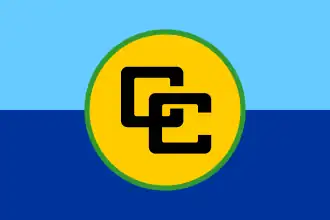 |
 |
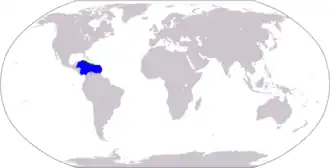
| |
The Caribbean is a region in the middle of the Americas centered around the Caribbean Sea in the North Atlantic Ocean, mostly overlapping with the West Indies. Bordered by North America to the north, Central America to the west, and South America to the south, it comprises numerous islands, cays, islets, reefs, and banks.
It includes the Lucayan Archipelago, Greater Antilles, and Lesser Antilles of the West Indies; the Quintana Roo islands and Belizean islands of the Yucatán Peninsula; and the Bay Islands, Miskito Cays, Archipelago of San Andrés, Providencia, and Santa Catalina, Corn Islands, and San Blas Islands of Central America. It also includes the coastal areas on the continental mainland of the Americas bordering the region from the Yucatán Peninsula in North America through Central America to the Guianas in South America. (Full article...)
 Good article -
Good article -

The currencies of Puerto Rico closely follow the historic development of the territory. As a Province of Spain (Autonomous Community) and a territory of the United States, Puerto Rico was granted the use of both foreign and provincial currencies. Following the Spanish colonization in 1508, Puerto Rico became an important port, with its own supply of gold. However, as the mineral reserves ran empty within the century, the archipelago's economy suffered. The Spanish Crown issued the Situado Mexicano, which meant that a semi-regular shipment of gold from the Viceroyalty of New Spain would be sent to the island, as a way to provide economic support. Between 1636 and 1637, Philip IV of Spain imposed a tax which had to be paid using a revenue stamp. Inspired by this, Puerto Rico began producing banknotes in 1766, becoming the first Overseas Province to print 8-real banknotes in the Spanish Empire and which in the Spanish government's approval of subsequent issues.
The situado was discontinued during the 19th century, creating an economic crisis, as a result of Mexico gaining its independence from Spain. Salvador Meléndez Bruna, the colonial governor in office, ordered the issue of provincial banknotes, creating the Puerto Rican peso. However, printing of these banknotes ceased after 1815. During the following decades, foreign coins became the widespread currency. In the 1860s and 1870s, banknotes reemerged. On February 1, 1890, the Banco Español de Puerto Rico was inaugurated and began issuing banknotes. The bank designed four series and placed three in circulation under Spanish rule. In 1895, a Royal Decree ordered the production of provincial peso coins. (Full article...)
Selected geography article -
The Caribbean Sea is a sea of the North Atlantic Ocean in the tropics of the Western Hemisphere, located south of the Gulf of Mexico and southwest of the Sargasso Sea. It is bounded by the Greater Antilles to the north from Cuba to Puerto Rico, the Lesser Antilles to the east from the Virgin Islands to Trinidad and Tobago, South America to the south from the Venezuelan coastline to the Colombian coastline, and Central America and the Yucatán Peninsula to the west from Panama to Mexico. The geopolitical region around the Caribbean Sea, including the numerous islands of the West Indies and adjacent coastal areas in the mainland of the Americas, is known as the Caribbean.
The Caribbean Sea is one of the largest seas on Earth and has an area of about 2,754,000 km2 (1,063,000 sq mi). The sea's deepest point is the Cayman Trough, between the Cayman Islands and Jamaica, at 7,686 m (25,217 ft) below sea level. The Caribbean coastline has many gulfs and bays: the Gulf of Gonâve, the Gulf of Venezuela, the Gulf of Darién, Golfo de los Mosquitos, the Gulf of Paria and the Gulf of Honduras. (Full article...)
Selected fare or cuisine -
Run down, also referred to as rundown, run dun, rondón, fling-me-far, and fling mi for, is a stew dish in Jamaican cuisine and Tobago cuisine. The traditional Jamaican dish is eaten in several Latin American countries that share a coast with the Caribbean Sea.
It consists of a soup made up of reduced coconut milk, with different types of seafood (fish, crabs, small lobsters or shellfish), plantain, yam, tomato, onion, and seasonings. Mackerel and salted mackerel are often used in the dish. Other fish are also used, including locally caught fish, cod, salt cod, shad, other oily fish, red snapper, swordfish, pickled fish, bull pizzle, and cassava. Traditionally, the dish is served with side dishes of dumplings or baked breadfruit. (Full article...)
Did you know? -
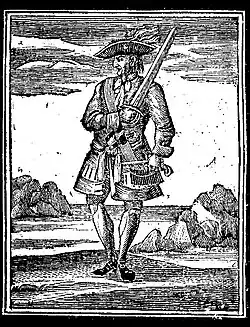
- ...that Calico Jack (pictured), an English pirate captain during the early 18th century, was executed with most of his crew in Jamaica on 17 November 1720?
- ...that Rationing in Cuba was instated on March 12, 1962, a month after the imposition of the United States embargo against Cuba, and remains to this day?
- ...that Trenchtown, a neighbourhood in Kingston, Jamaica, gets its name from a large open-trenched sewer that ran through the neighbourhood?
Related portals
Wikiproject
 Featured article -
Featured article -
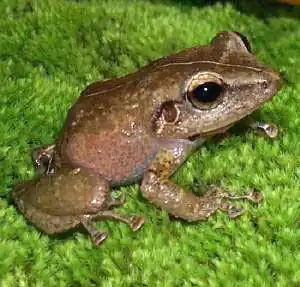
The fauna of Puerto Rico is similar to other island archipelago faunas, with high endemism, and low, skewed taxonomic diversity. Bats are the only extant native terrestrial mammals in Puerto Rico. All other terrestrial mammals in the area were introduced by humans, and include species such as cats, goats, sheep, the small Indian mongoose, and escaped monkeys. Marine mammals include dolphins, manatees, and whales. Of the 349 bird species, about 120 breed in the archipelago, and 47.5% are accidental or rare.
The most recognizable and famous animal of Puerto Rico is probably the common coquí, a small endemic frog, and one of the 86 species that constitute Puerto Rico's herpetofauna. Some native freshwater fish inhabit Puerto Rico, but some species, introduced by humans, have established populations in reservoirs and rivers. The low richness-high diversity pattern is also apparent among invertebrates, which constitutes most of the archipelago's fauna. (Full article...)
Selected image -
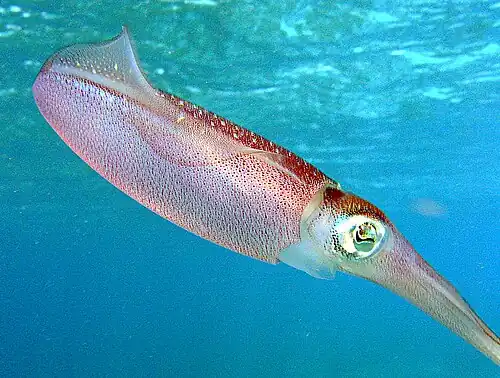
Caribbean Reef Squid (Sepioteuthis sepioidea)
Selected music -
Merengue is a type of music and dance originating in present-day Dominican Republic which has become a very popular genre throughout Latin America, and also in several major cities in the United States with Latino communities. Merengue was inscribed on November 30, 2016, in the representative list of the Intangible Cultural Heritage of Humanity of UNESCO.
Merengue was developed in the middle of the 1800s, originally played with European stringed instruments (bandurria and guitar). Years later, the stringed instruments were replaced by the accordion, thus conforming, together with the güira and the tambora, the instrumental structure of the typical merengue ensemble. This set, with its three instruments, represents the synthesis of the three cultures that made up the idiosyncrasy of Dominican culture. The European influence is represented by the accordion, the African by the Tambora, which is a two-head drum, and the Taino or aboriginal by the güira. (Full article...)
General images
Caribbean topics
Categories

New articles
Rules | Match log | Results page (for watching) | Last updated: 2025-08-20 19:37 (UTC)
Note: The list display can now be customized by each user. See List display personalization for details.
- Commonwealth University (edit | talk | history | links | watch | logs | tools) by Bernardgeorgeh (talk · contribs · new pages (1)) started on 2025-08-20, score: 16
- Orthopappus (edit | talk | history | links | watch | logs | tools) by Tom Radulovich (talk · contribs · new pages (169)) started on 2025-08-20, score: 16
- Lacsamana (surname) (edit | talk | history | links | watch | logs | tools) by Toniker0501 (talk · contribs · new pages (7)) started on 2025-08-20, score: 16
- J. J. Broderick (edit | talk | history | links | watch | logs | tools) by C411978 (talk · contribs · new pages (9)) started on 2025-08-20, score: 16
- 2025 NACAC Championships – Results (edit | talk | history | links | watch | logs | tools) by Pietaster (talk · contribs · new pages (2)) started on 2025-08-20, score: 16
- Bagre filamentosus (edit | talk | history | links | watch | logs | tools) by Big Blue Cray(fish) Twins (talk · contribs · new pages (55)) started on 2025-08-20, score: 16
- Luis Miguel Valdés Morales (edit | talk | history | links | watch | logs | tools) by Kornelius19 (talk · contribs · new pages (1)) started on 2025-08-20, score: 16
- 2026 PGA Tour (edit | talk | history | links | watch | logs | tools) by Derlinus (talk · contribs · new pages (7)) started on 2025-08-20, score: 16
- Miguel Cotto vs. Sadam Ali (edit | talk | history | links | watch | logs | tools) by Beast from da East (talk · contribs · new pages (5)) started on 2025-08-20, score: 16
- Viet Cong Express (edit | talk | history | links | watch | logs | tools) by DefLeppardVanHalen (talk · contribs · new pages (1)) started on 2025-08-20, score: 24
- Manuel Antonio Pérez (edit | talk | history | links | watch | logs | tools) by Aquabluetesla (talk · contribs · new pages (14)) started on 2025-08-20, score: 16
- Ralph Arza (edit | talk | history | links | watch | logs | tools) by PA Uploader (talk · contribs · new pages (41)) started on 2025-08-20, score: 16
- Luis Rojas (Florida politician) (edit | talk | history | links | watch | logs | tools) by PA Uploader (talk · contribs · new pages (41)) started on 2025-08-20, score: 16
- Luehea seemannii (edit | talk | history | links | watch | logs | tools) by Abductive (talk · contribs · new pages (28)) started on 2025-08-20, score: 16
- Rafael Martínez Pacheco (edit | talk | history | links | watch | logs | tools) by Isinbill (talk · contribs · new pages (2)) started on 2025-08-19, score: 16
- María Cabrales (edit | talk | history | links | watch | logs | tools) by SDGB1217 (talk · contribs · new pages (29)) started on 2025-08-19, score: 24
- Pedro Monés, Marquess of Casa Maury (edit | talk | history | links | watch | logs | tools) by DACC23 (talk · contribs · new pages (27)) started on 2025-08-19, score: 16
- Claude Vincent (edit | talk | history | links | watch | logs | tools) by MayneAndRowan (talk · contribs · new pages (11)) started on 2025-08-19, score: 32
- 2025 World Lacrosse Men's U-20 Championship (edit | talk | history | links | watch | logs | tools) by Stevencocoboy (talk · contribs · new pages (12)) started on 2025-08-16, score: 16
- African esotericism (edit | talk | history | links | watch | logs | tools) by Evedawn99 (talk · contribs · new pages (1)) started on 2025-08-19, score: 16
- Chico Heron (edit | talk | history | links | watch | logs | tools) by Captain Parmenter (talk · contribs · new pages (8)) started on 2025-08-19, score: 24
- Moran Michel (edit | talk | history | links | watch | logs | tools) by Omert33 (talk · contribs · new pages (1)) started on 2025-08-19, score: 16
- Zepherina trinidadensis (edit | talk | history | links | watch | logs | tools) by B33tleMania12 (talk · contribs · new pages (1063)) started on 2025-08-19, score: 16
- Virgin Islands at the 2025 World Aquatics Championships (edit | talk | history | links | watch | logs | tools) by WildCherry06 (talk · contribs · new pages (73)) started on 2025-08-19, score: 16
- Charles C. Lindner (edit | talk | history | links | watch | logs | tools) by EulerianTrail (talk · contribs · new pages (4)) started on 2025-08-19, score: 16
- 29th Lima Film Festival (edit | talk | history | links | watch | logs | tools) by JuliánLeiva66 (talk · contribs · new pages (84)) started on 2025-08-19, score: 16
- Joseph Ryan Smolarz (edit | talk | history | links | watch | logs | tools) by Katgert (talk · contribs · new pages (3)) started on 2025-08-18, score: 16
- Jesús Vargas (baseball) (edit | talk | history | links | watch | logs | tools) by Stonecold415 (talk · contribs · new pages (9)) started on 2025-08-18, score: 16
- 2025 CONCACAF Caribbean Cup group stage (edit | talk | history | links | watch | logs | tools) by Thiago89 (talk · contribs · new pages (2)) started on 2025-08-18, score: 44
- Abraham Lincoln, Cuba (edit | talk | history | links | watch | logs | tools) by CubanoBoi (talk · contribs · new pages (3)) started on 2025-08-18, score: 16
- Doroteo Guamuch Flores Stadium (edit | talk | history | links | watch | logs | tools) by ComunicacionesFan2011 (talk · contribs · new pages (17)) started on 2025-08-18, score: 16
- Ramón Méndez (baseball) (edit | talk | history | links | watch | logs | tools) by Captain Parmenter (talk · contribs · new pages (8)) started on 2025-08-18, score: 32
- Tomás Gutiérrez (disambiguation) (edit | talk | history | links | watch | logs | tools) by Moscow Mule (talk · contribs · new pages (74)) started on 2025-08-18, score: 32
- List of Olympic competitors (De–Dh) (edit | talk | history | links | watch | logs | tools) by Habst (talk · contribs · new pages (108)) started on 2025-08-18, score: 160
- List of Olympic competitors (Fp–Fz) (edit | talk | history | links | watch | logs | tools) by Habst (talk · contribs · new pages (108)) started on 2025-08-18, score: 192
- List of Olympic competitors (Bar–Bd) (edit | talk | history | links | watch | logs | tools) by Habst (talk · contribs · new pages (108)) started on 2025-08-18, score: 192
- List of Olympic competitors (Ci–Cn) (edit | talk | history | links | watch | logs | tools) by Habst (talk · contribs · new pages (108)) started on 2025-08-18, score: 160
- Hockey at the 1998 Commonwealth Games – Women's team squads (edit | talk | history | links | watch | logs | tools) by ApricotFoot (talk · contribs · new pages (126)) started on 2025-08-18, score: 16
- Address format by country and area (edit | talk | history | links | watch | logs | tools) by Onel5969 (talk · contribs · new pages (164)) started on 2025-08-18, score: 16
- Timeline of the second Trump presidency (2025 Q1) (edit | talk | history | links | watch | logs | tools) by ElijahPepe (talk · contribs · new pages (61)) started on 2025-08-18, score: 16
- Short Lived States and Dependencies (edit | talk | history | links | watch | logs | tools) by Phudeptrai47540370870 (talk · contribs · new pages (2)) started on 2025-08-18, score: 16
- Timeline of the first Trump presidency (2017 Q4) (edit | talk | history | links | watch | logs | tools) by ElijahPepe (talk · contribs · new pages (61)) started on 2025-08-18, score: 32
- Towers (surname) (edit | talk | history | links | watch | logs | tools) by Charles Matthews (talk · contribs · new pages (25)) started on 2025-08-18, score: 16
- Turks and Caicos Islands at the 2025 World Aquatics Championships (edit | talk | history | links | watch | logs | tools) by WildCherry06 (talk · contribs · new pages (73)) started on 2025-08-17, score: 16
- Gambusia yucatana (edit | talk | history | links | watch | logs | tools) by Gaiacoyote (talk · contribs · new pages (2)) started on 2025-08-17, score: 16
- Doreen Potter (edit | talk | history | links | watch | logs | tools) by Gamaliel (talk · contribs · new pages (13)) started on 2025-08-17, score: 16
- Endureed (edit | talk | history | links | watch | logs | tools) by Simplysopht (talk · contribs · new pages (2)) started on 2025-08-14, score: 16
- 1987 Saint Lucian general election (edit | talk | history | links | watch | logs | tools) by FaroeFO (talk · contribs · new pages (286)) started on 2025-08-17, score: 16
- April 1987 Saint Lucian general election (edit | talk | history | links | watch | logs | tools) by FaroeFO (talk · contribs · new pages (286)) started on 2025-08-17, score: 16
- Trinidad and Tobago at the 2025 World Aquatics Championships (edit | talk | history | links | watch | logs | tools) by WildCherry06 (talk · contribs · new pages (73)) started on 2025-08-17, score: 16
- Three dollar bill (edit | talk | history | links | watch | logs | tools) by White 720 (talk · contribs · new pages (3)) started on 2025-08-17, score: 16
- Saint Anne's Hospital (Fall River, Massachusetts) (edit | talk | history | links | watch | logs | tools) by Dahawk04 (talk · contribs · new pages (3)) started on 2025-08-17, score: 16
- Ottos Rangers FC (edit | talk | history | links | watch | logs | tools) by Gri3720 (talk · contribs · new pages (2)) started on 2025-08-17, score: 32
- Kaiwan Culmer (edit | talk | history | links | watch | logs | tools) by Hildreth gazzard (talk · contribs · new pages (156)) started on 2025-08-17, score: 16
- Cynthia Reyes (edit | talk | history | links | watch | logs | tools) by EssNS (talk · contribs · new pages (10)) started on 2025-08-17, score: 16
- Sanique Walker (edit | talk | history | links | watch | logs | tools) by Hildreth gazzard (talk · contribs · new pages (156)) started on 2025-08-17, score: 24
- Prentice (surname) (edit | talk | history | links | watch | logs | tools) by Charles Matthews (talk · contribs · new pages (25)) started on 2025-08-17, score: 16
- List of Sigma Delta Pi chapters (edit | talk | history | links | watch | logs | tools) by Rublamb (talk · contribs · new pages (10)) started on 2025-08-17, score: 16
- H. D. Shillingford (edit | talk | history | links | watch | logs | tools) by Mr Fawkz (talk · contribs · new pages (5)) started on 2025-08-16, score: 16
- Ernest Tucker (edit | talk | history | links | watch | logs | tools) by EssNS (talk · contribs · new pages (10)) started on 2025-08-16, score: 16
- Nikaoli Williams (edit | talk | history | links | watch | logs | tools) by Hildreth gazzard (talk · contribs · new pages (156)) started on 2025-08-16, score: 24
- Henri Tourtet (edit | talk | history | links | watch | logs | tools) by Timeousbeastie (talk · contribs · new pages (1)) started on 2025-08-16, score: 40
- Scymnobius obscurus (edit | talk | history | links | watch | logs | tools) by B33tleMania12 (talk · contribs · new pages (1063)) started on 2025-08-16, score: 16
- Virgin Islands Americans (stateside) (edit | talk | history | links | watch | logs | tools) by Avengers350 (talk · contribs · new pages (9)) started on 2025-08-16, score: 67
- Travel bans under the Trump administrations (edit | talk | history | links | watch | logs | tools) by Asukite (talk · contribs · new pages (25)) started on 2025-08-16, score: 16
- Scymnobius bilucernarius (edit | talk | history | links | watch | logs | tools) by B33tleMania12 (talk · contribs · new pages (1063)) started on 2025-08-16, score: 16
- Beéle (edit | talk | history | links | watch | logs | tools) by Send down the rain (talk · contribs · new pages (3)) started on 2025-08-16, score: 16
- Mary Sarah Oates (edit | talk | history | links | watch | logs | tools) by SapientSquid (talk · contribs · new pages (4)) started on 2025-08-16, score: 24
- List of Olympic competitors (Li–Ln) (edit | talk | history | links | watch | logs | tools) by Habst (talk · contribs · new pages (108)) started on 2025-08-16, score: 192
- Timeline of the 1997 Atlantic hurricane season (edit | talk | history | links | watch | logs | tools) by Dylan620 (talk · contribs · new pages (1)) started on 2025-08-16, score: 32
- Highbourne Cay (edit | talk | history | links | watch | logs | tools) by Moonraker12 (talk · contribs · new pages (2)) started on 2025-08-15, score: 16
- 1962 Cuban National Series (edit | talk | history | links | watch | logs | tools) by Captain Parmenter (talk · contribs · new pages (8)) started on 2025-08-15, score: 16
- Miguel Román (footballer) (edit | talk | history | links | watch | logs | tools) by BrazilianDude70 (talk · contribs · new pages (87)) started on 2025-08-15, score: 16
- Hurricane Erin (2025) (edit | talk | history | links | watch | logs | tools) by PopularGames (talk · contribs · new pages (2)) started on 2025-08-11, score: 96
- Racquetball at the 2002 Central American and Caribbean Games (edit | talk | history | links | watch | logs | tools) by Osplace (talk · contribs · new pages (7)) started on 2025-08-15, score: 43
- Noel Areas (edit | talk | history | links | watch | logs | tools) by Captain Parmenter (talk · contribs · new pages (8)) started on 2025-08-15, score: 32
- Orlando Husbands (edit | talk | history | links | watch | logs | tools) by GeorgeMHall (talk · contribs · new pages (20)) started on 2025-08-15, score: 16
- Novius punicus (edit | talk | history | links | watch | logs | tools) by B33tleMania12 (talk · contribs · new pages (1063)) started on 2025-08-15, score: 24
- Samuel Saba (edit | talk | history | links | watch | logs | tools) by Pubsitan (talk · contribs · new pages (7)) started on 2025-08-15, score: 16
- Emma Winifred O'Malley (edit | talk | history | links | watch | logs | tools) by Gamaliel (talk · contribs · new pages (13)) started on 2025-08-15, score: 16
- Madame Pierre town (edit | talk | history | links | watch | logs | tools) by KeyolTranslater (talk · contribs · new pages (2)) started on 2025-08-15, score: 32
- Lilla G. Frederick (edit | talk | history | links | watch | logs | tools) by Halimaliha (talk · contribs · new pages (5)) started on 2025-08-15, score: 32
- Racquetball at the 1998 Central American and Caribbean Games (edit | talk | history | links | watch | logs | tools) by Osplace (talk · contribs · new pages (7)) started on 2025-08-15, score: 27
- Calloeneis amazonica (edit | talk | history | links | watch | logs | tools) by B33tleMania12 (talk · contribs · new pages (1063)) started on 2025-08-15, score: 16
- Nephaspis nigra (edit | talk | history | links | watch | logs | tools) by B33tleMania12 (talk · contribs · new pages (1063)) started on 2025-08-15, score: 16
- Viridigloba imitator (edit | talk | history | links | watch | logs | tools) by B33tleMania12 (talk · contribs · new pages (1063)) started on 2025-08-15, score: 16
- Zagloba aeneipennis (edit | talk | history | links | watch | logs | tools) by B33tleMania12 (talk · contribs · new pages (1063)) started on 2025-08-15, score: 32
- Coccidophilus cariba (edit | talk | history | links | watch | logs | tools) by B33tleMania12 (talk · contribs · new pages (1063)) started on 2025-08-15, score: 72
- Psorolyma baorucensis (edit | talk | history | links | watch | logs | tools) by B33tleMania12 (talk · contribs · new pages (1063)) started on 2025-08-15, score: 16
- Psorolyma doyeni (edit | talk | history | links | watch | logs | tools) by B33tleMania12 (talk · contribs · new pages (1063)) started on 2025-08-15, score: 16
- Psorolyma cyanella (edit | talk | history | links | watch | logs | tools) by B33tleMania12 (talk · contribs · new pages (1063)) started on 2025-08-15, score: 32
- Psorolyma sicardi (edit | talk | history | links | watch | logs | tools) by B33tleMania12 (talk · contribs · new pages (1063)) started on 2025-08-15, score: 16
- Psorolyma maxillosa (edit | talk | history | links | watch | logs | tools) by B33tleMania12 (talk · contribs · new pages (1063)) started on 2025-08-15, score: 16
- Neaptera cubensis (edit | talk | history | links | watch | logs | tools) by B33tleMania12 (talk · contribs · new pages (1063)) started on 2025-08-15, score: 16
- Neaptera doyeni (edit | talk | history | links | watch | logs | tools) by B33tleMania12 (talk · contribs · new pages (1063)) started on 2025-08-15, score: 16
- Neotina schwarzi (edit | talk | history | links | watch | logs | tools) by B33tleMania12 (talk · contribs · new pages (1063)) started on 2025-08-15, score: 16
- Lenasa jayuyai (edit | talk | history | links | watch | logs | tools) by B33tleMania12 (talk · contribs · new pages (1063)) started on 2025-08-15, score: 16
- Parinesa whiteheadi (edit | talk | history | links | watch | logs | tools) by B33tleMania12 (talk · contribs · new pages (1063)) started on 2025-08-15, score: 16
- Neaptera viola (edit | talk | history | links | watch | logs | tools) by B33tleMania12 (talk · contribs · new pages (1063)) started on 2025-08-15, score: 16
- Neaptera korschefskyi (edit | talk | history | links | watch | logs | tools) by B33tleMania12 (talk · contribs · new pages (1063)) started on 2025-08-15, score: 16
- Neaptera viridissima (edit | talk | history | links | watch | logs | tools) by B33tleMania12 (talk · contribs · new pages (1063)) started on 2025-08-15, score: 16
- Neaptera purpurea (edit | talk | history | links | watch | logs | tools) by B33tleMania12 (talk · contribs · new pages (1063)) started on 2025-08-15, score: 16
- Semiviride portoricensis (edit | talk | history | links | watch | logs | tools) by B33tleMania12 (talk · contribs · new pages (1063)) started on 2025-08-15, score: 16
- Semiviride loisobrienae (edit | talk | history | links | watch | logs | tools) by B33tleMania12 (talk · contribs · new pages (1063)) started on 2025-08-15, score: 16
- Paranelasa polita (edit | talk | history | links | watch | logs | tools) by B33tleMania12 (talk · contribs · new pages (1063)) started on 2025-08-15, score: 16
- Paranelasa jamaicensis (edit | talk | history | links | watch | logs | tools) by B33tleMania12 (talk · contribs · new pages (1063)) started on 2025-08-15, score: 16
- Nelasa dominicensis (edit | talk | history | links | watch | logs | tools) by B33tleMania12 (talk · contribs · new pages (1063)) started on 2025-08-15, score: 16
- Nelasa haitiensis (edit | talk | history | links | watch | logs | tools) by B33tleMania12 (talk · contribs · new pages (1063)) started on 2025-08-15, score: 16
- Nelasa cubensis (edit | talk | history | links | watch | logs | tools) by B33tleMania12 (talk · contribs · new pages (1063)) started on 2025-08-15, score: 16
- Nelasa schwarzi (edit | talk | history | links | watch | logs | tools) by B33tleMania12 (talk · contribs · new pages (1063)) started on 2025-08-15, score: 16
- Nelasa duncansensis (edit | talk | history | links | watch | logs | tools) by B33tleMania12 (talk · contribs · new pages (1063)) started on 2025-08-15, score: 16
- Nelasa howdeni (edit | talk | history | links | watch | logs | tools) by B33tleMania12 (talk · contribs · new pages (1063)) started on 2025-08-15, score: 16
- Nelasa iricolor (edit | talk | history | links | watch | logs | tools) by B33tleMania12 (talk · contribs · new pages (1063)) started on 2025-08-15, score: 16
- Nelasa beckeri (edit | talk | history | links | watch | logs | tools) by B33tleMania12 (talk · contribs · new pages (1063)) started on 2025-08-15, score: 16
- Nelasa erugonota (edit | talk | history | links | watch | logs | tools) by B33tleMania12 (talk · contribs · new pages (1063)) started on 2025-08-15, score: 16
- Neotina cariba (edit | talk | history | links | watch | logs | tools) by B33tleMania12 (talk · contribs · new pages (1063)) started on 2025-08-15, score: 24
- Rakeem Joseph (edit | talk | history | links | watch | logs | tools) by Harold9595959 (talk · contribs · new pages (5)) started on 2025-08-15, score: 56
- Exochomus jamaicensis (edit | talk | history | links | watch | logs | tools) by B33tleMania12 (talk · contribs · new pages (1063)) started on 2025-08-15, score: 16
- Scymnus floralis (edit | talk | history | links | watch | logs | tools) by B33tleMania12 (talk · contribs · new pages (1063)) started on 2025-08-15, score: 16
- Physalia megalista (edit | talk | history | links | watch | logs | tools) by 98.151.143.254 (talk · contribs · new pages (83)) started on 2025-08-15, score: 19
- Puerto Rico Seismic Network (edit | talk | history | links | watch | logs | tools) by Ligocsicnarf89 (talk · contribs · new pages (2)) started on 2025-08-14, score: 48
- Great Northern Puerto Rico fault zone (edit | talk | history | links | watch | logs | tools) by Ligocsicnarf89 (talk · contribs · new pages (2)) started on 2025-08-14, score: 40
- NavaShield (edit | talk | history | links | watch | logs | tools) by Yousuf31 (talk · contribs · new pages (4)) started on 2025-08-14, score: 16
- Jamaica Wrestling Federation (edit | talk | history | links | watch | logs | tools) by Diwresadem (talk · contribs · new pages (2)) started on 2025-08-14, score: 16
- Nava Shield (edit | talk | history | links | watch | logs | tools) by Yousuf31 (talk · contribs · new pages (4)) started on 2025-08-14, score: 16
- FUTURO (edit | talk | history | links | watch | logs | tools) by Greenleader(2) (talk · contribs · new pages (8)) started on 2025-08-14, score: 16
- Cardines (edit | talk | history | links | watch | logs | tools) by Ortizesp (talk · contribs · new pages (146)) started on 2025-08-14, score: 16
- General José Trinidad Cabañas National Police Academy of Honduras (edit | talk | history | links | watch | logs | tools) by Gommeh (talk · contribs · new pages (18)) started on 2025-08-14, score: 16
- Marie-Adélaïde de La Touche-Limouzinière (edit | talk | history | links | watch | logs | tools) by SDGB1217 (talk · contribs · new pages (29)) started on 2025-08-14, score: 32
- List of Olympic competitors (Mo–Mt) (edit | talk | history | links | watch | logs | tools) by Habst (talk · contribs · new pages (108)) started on 2025-08-14, score: 192
- List of Olympic competitors (Hy–Iz) (edit | talk | history | links | watch | logs | tools) by Habst (talk · contribs · new pages (108)) started on 2025-08-14, score: 160
- List of Olympic competitors (Ho–Hx) (edit | talk | history | links | watch | logs | tools) by Habst (talk · contribs · new pages (108)) started on 2025-08-14, score: 240
- List of Olympic competitors (He–Hn) (edit | talk | history | links | watch | logs | tools) by Habst (talk · contribs · new pages (108)) started on 2025-08-14, score: 224
- List of Olympic competitors (Ha–Hd) (edit | talk | history | links | watch | logs | tools) by Habst (talk · contribs · new pages (108)) started on 2025-08-14, score: 176
- List of Olympic competitors (Gp–Gz) (edit | talk | history | links | watch | logs | tools) by Habst (talk · contribs · new pages (108)) started on 2025-08-14, score: 224
- List of Olympic competitors (Gi–Go) (edit | talk | history | links | watch | logs | tools) by Habst (talk · contribs · new pages (108)) started on 2025-08-14, score: 160
- List of Olympic competitors (Ga–Gh) (edit | talk | history | links | watch | logs | tools) by Habst (talk · contribs · new pages (108)) started on 2025-08-14, score: 240
- List of Olympic competitors (Fi–Fz) (edit | talk | history | links | watch | logs | tools) by Habst (talk · contribs · new pages (108)) started on 2025-08-14, score: 240
- List of Olympic competitors (Er–Fh) (edit | talk | history | links | watch | logs | tools) by Habst (talk · contribs · new pages (108)) started on 2025-08-14, score: 224
- List of Olympic competitors (Dt–Eq) (edit | talk | history | links | watch | logs | tools) by Habst (talk · contribs · new pages (108)) started on 2025-08-14, score: 192
- List of Olympic competitors (Di–Ds) (edit | talk | history | links | watch | logs | tools) by Habst (talk · contribs · new pages (108)) started on 2025-08-14, score: 208
- List of Olympic competitors (Da–Dh) (edit | talk | history | links | watch | logs | tools) by Habst (talk · contribs · new pages (108)) started on 2025-08-14, score: 208
- List of Olympic competitors (Co–Cz) (edit | talk | history | links | watch | logs | tools) by Habst (talk · contribs · new pages (108)) started on 2025-08-14, score: 240
- List of Olympic competitors (Cf–Cn) (edit | talk | history | links | watch | logs | tools) by Habst (talk · contribs · new pages (108)) started on 2025-08-14, score: 224
- List of Olympic competitors (Ca–Ce) (edit | talk | history | links | watch | logs | tools) by Habst (talk · contribs · new pages (108)) started on 2025-08-14, score: 176
- List of Olympic competitors (Bu–Bz) (edit | talk | history | links | watch | logs | tools) by Habst (talk · contribs · new pages (108)) started on 2025-08-14, score: 128
- List of Olympic competitors (Br–Bt) (edit | talk | history | links | watch | logs | tools) by Habst (talk · contribs · new pages (108)) started on 2025-08-14, score: 208
- List of Olympic competitors (Bo–Bq) (edit | talk | history | links | watch | logs | tools) by Habst (talk · contribs · new pages (108)) started on 2025-08-14, score: 128
- List of Olympic competitors (Bg–Bn) (edit | talk | history | links | watch | logs | tools) by Habst (talk · contribs · new pages (108)) started on 2025-08-14, score: 112
- List of Olympic competitors (Be–Bf) (edit | talk | history | links | watch | logs | tools) by Habst (talk · contribs · new pages (108)) started on 2025-08-14, score: 224
- List of Olympic competitors (Ba–Bd) (edit | talk | history | links | watch | logs | tools) by Habst (talk · contribs · new pages (108)) started on 2025-08-14, score: 224
- List of Olympic competitors (Ar–Az) (edit | talk | history | links | watch | logs | tools) by Habst (talk · contribs · new pages (108)) started on 2025-08-14, score: 192
- List of Olympic competitors (An–Aq) (edit | talk | history | links | watch | logs | tools) by Habst (talk · contribs · new pages (108)) started on 2025-08-14, score: 144
- List of Olympic competitors (Al–Am) (edit | talk | history | links | watch | logs | tools) by Habst (talk · contribs · new pages (108)) started on 2025-08-14, score: 192
- List of Olympic competitors (Aa–Ak) (edit | talk | history | links | watch | logs | tools) by Habst (talk · contribs · new pages (108)) started on 2025-08-14, score: 176
- Stethorus mayaroi (edit | talk | history | links | watch | logs | tools) by B33tleMania12 (talk · contribs · new pages (1063)) started on 2025-08-14, score: 16
- Stethorus pseudocaribus (edit | talk | history | links | watch | logs | tools) by B33tleMania12 (talk · contribs · new pages (1063)) started on 2025-08-14, score: 16
- Stethorus albipes (edit | talk | history | links | watch | logs | tools) by B33tleMania12 (talk · contribs · new pages (1063)) started on 2025-08-14, score: 96
- Miguel Cotto vs. Yoshihiro Kamegai (edit | talk | history | links | watch | logs | tools) by Beast from da East (talk · contribs · new pages (5)) started on 2025-08-14, score: 16
- Climate finance in Guatemala (edit | talk | history | links | watch | logs | tools) by Charismad (talk · contribs · new pages (3)) started on 2025-08-14, score: 16
- The Secret Abolitionist Society (edit | talk | history | links | watch | logs | tools) by Shsusbsvusbsvzjsb (talk · contribs · new pages (3)) started on 2025-08-14, score: 16
- Nicholas of Hanapes (edit | talk | history | links | watch | logs | tools) by Surtsicna (talk · contribs · new pages (140)) started on 2025-08-13, score: 16
- Jahnel Nisbett (edit | talk | history | links | watch | logs | tools) by Greenleader(2) (talk · contribs · new pages (8)) started on 2025-08-13, score: 16
- Pamela Nicholson (politician) (edit | talk | history | links | watch | logs | tools) by Moondragon21 (talk · contribs · new pages (207)) started on 2025-08-13, score: 16
- Patricia McIntosh (edit | talk | history | links | watch | logs | tools) by Moondragon21 (talk · contribs · new pages (207)) started on 2025-08-13, score: 16
- Nicole Olivierre (edit | talk | history | links | watch | logs | tools) by Moondragon21 (talk · contribs · new pages (207)) started on 2025-08-13, score: 16
- Brenda Emmanus (edit | talk | history | links | watch | logs | tools) by Balance person (talk · contribs · new pages (1)) started on 2025-08-13, score: 16
- Porter (surname) (edit | talk | history | links | watch | logs | tools) by Charles Matthews (talk · contribs · new pages (25)) started on 2025-08-12, score: 16
- National Association of Marine Laboratories (edit | talk | history | links | watch | logs | tools) by L.Burno (talk · contribs · new pages (1)) started on 2025-08-08, score: 16
- Robert Pickersgill (edit | talk | history | links | watch | logs | tools) by Moondragon21 (talk · contribs · new pages (207)) started on 2025-08-13, score: 16
- Noel Arscott (edit | talk | history | links | watch | logs | tools) by Moondragon21 (talk · contribs · new pages (207)) started on 2025-08-13, score: 16
- Colin Fagan (edit | talk | history | links | watch | logs | tools) by Moondragon21 (talk · contribs · new pages (207)) started on 2025-08-13, score: 16
- Joseph Willy Romélus (edit | talk | history | links | watch | logs | tools) by Thief-River-Faller (talk · contribs · new pages (106)) started on 2025-08-13, score: 16
- Victor Wright (edit | talk | history | links | watch | logs | tools) by Moondragon21 (talk · contribs · new pages (207)) started on 2025-08-13, score: 16
- Michael Stewart (Jamaican politician) (edit | talk | history | links | watch | logs | tools) by Moondragon21 (talk · contribs · new pages (207)) started on 2025-08-13, score: 16
- Provo United SC (edit | talk | history | links | watch | logs | tools) by Gri3720 (talk · contribs · new pages (2)) started on 2025-08-13, score: 16
- Netball at the 1998 Commonwealth Games squads (edit | talk | history | links | watch | logs | tools) by Djln19 (talk · contribs · new pages (12)) started on 2025-08-13, score: 16
- Cuba Mitchell (edit | talk | history | links | watch | logs | tools) by FNH004 (talk · contribs · new pages (1)) started on 2025-08-13, score: 24
- Antonio Isa Conde (edit | talk | history | links | watch | logs | tools) by Thief-River-Faller (talk · contribs · new pages (106)) started on 2025-08-13, score: 36
- Delphastus chapini (edit | talk | history | links | watch | logs | tools) by B33tleMania12 (talk · contribs · new pages (1063)) started on 2025-08-13, score: 16
- Delphastus nebulosus (edit | talk | history | links | watch | logs | tools) by B33tleMania12 (talk · contribs · new pages (1063)) started on 2025-08-13, score: 16
- Cryptognatha gemellata (edit | talk | history | links | watch | logs | tools) by B33tleMania12 (talk · contribs · new pages (1063)) started on 2025-08-13, score: 16
- Geoffrey Colley (edit | talk | history | links | watch | logs | tools) by Mahmoudalrawi (talk · contribs · new pages (2)) started on 2025-08-13, score: 16
- Boat people (disambiguation) (edit | talk | history | links | watch | logs | tools) by Bkonrad (talk · contribs · new pages (9)) started on 2025-08-13, score: 24
- Pentilia estelle (edit | talk | history | links | watch | logs | tools) by B33tleMania12 (talk · contribs · new pages (1063)) started on 2025-08-13, score: 16
- Pentilia nadine (edit | talk | history | links | watch | logs | tools) by B33tleMania12 (talk · contribs · new pages (1063)) started on 2025-08-13, score: 16
- Oryssomus lineatus (edit | talk | history | links | watch | logs | tools) by B33tleMania12 (talk · contribs · new pages (1063)) started on 2025-08-13, score: 16
- Fikry Cassidy (edit | talk | history | links | watch | logs | tools) by Jeromi Mikhael (talk · contribs · new pages (21)) started on 2025-08-13, score: 80
- Annie Betancourt (edit | talk | history | links | watch | logs | tools) by PA Uploader (talk · contribs · new pages (41)) started on 2025-08-12, score: 16
- Zenoria emarginata (edit | talk | history | links | watch | logs | tools) by B33tleMania12 (talk · contribs · new pages (1063)) started on 2025-08-12, score: 16
- Shirley Shillingford (edit | talk | history | links | watch | logs | tools) by Halimaliha (talk · contribs · new pages (5)) started on 2025-08-12, score: 48
- Manhattan Burn (edit | talk | history | links | watch | logs | tools) by Caro7200 (talk · contribs · new pages (7)) started on 2025-08-12, score: 16
- John Hennings (diplomat) (edit | talk | history | links | watch | logs | tools) by C411978 (talk · contribs · new pages (9)) started on 2025-08-12, score: 24
- Pinel Island (edit | talk | history | links | watch | logs | tools) by Otopon (talk · contribs · new pages (1)) started on 2025-08-12, score: 40
- Wynter (surname) (edit | talk | history | links | watch | logs | tools) by Charles Matthews (talk · contribs · new pages (25)) started on 2025-08-12, score: 64
- List of Highways of Zone 1 (Cuba) (edit | talk | history | links | watch | logs | tools) by CubanoBoi (talk · contribs · new pages (3)) started on 2025-08-12, score: 16
- Angel Javier (edit | talk | history | links | watch | logs | tools) by Magiciandude (talk · contribs · new pages (2)) started on 2025-08-11, score: 16
- Bandar (film) (edit | talk | history | links | watch | logs | tools) by Rickyurs (talk · contribs · new pages (11)) started on 2025-08-09, score: 16
- Wyoming as a corporate haven (edit | talk | history | links | watch | logs | tools) by TXstockman5 (talk · contribs · new pages (1)) started on 2025-08-11, score: 16
- Flag of the Caribbean Community (edit | talk | history | links | watch | logs | tools) by JaxsonR (talk · contribs · new pages (16)) started on 2025-08-11, score: 43
- Atlantic manta ray (edit | talk | history | links | watch | logs | tools) by SlvrHwk (talk · contribs · new pages (46)) started on 2025-08-11, score: 16
- Diocese of Fajardo–Humacao (edit | talk | history | links | watch | logs | tools) by Surtsicna (talk · contribs · new pages (140)) started on 2025-08-11, score: 16
- Miguel Cotto vs. Daniel Geale (edit | talk | history | links | watch | logs | tools) by Beast from da East (talk · contribs · new pages (5)) started on 2025-08-11, score: 16
- Caribbean (film) (edit | talk | history | links | watch | logs | tools) by Clarityfiend (talk · contribs · new pages (25)) started on 2025-08-11, score: 16
- Puerto Rico at the 2025 World Aquatics Championships (edit | talk | history | links | watch | logs | tools) by WildCherry06 (talk · contribs · new pages (73)) started on 2025-08-11, score: 16
- Universal Woman 2025 (edit | talk | history | links | watch | logs | tools) by Nhoiialmanzor (talk · contribs · new pages (5)) started on 2025-08-11, score: 40
- The Queen's Closet (ensemble) (edit | talk | history | links | watch | logs | tools) by Marshelec (talk · contribs · new pages (8)) started on 2025-08-10, score: 16
- Eugenio Espinosa de los Monteros (edit | talk | history | links | watch | logs | tools) by Sundostund (talk · contribs · new pages (8)) started on 2025-08-10, score: 16
- Michael Zheng (edit | talk | history | links | watch | logs | tools) by Adamtt9 (talk · contribs · new pages (43)) started on 2025-08-10, score: 16
- Bruce Arnold (archer) (edit | talk | history | links | watch | logs | tools) by Vroomvroomletsgo (talk · contribs · new pages (1)) started on 2025-08-10, score: 16
- Decadiomus austrinus (edit | talk | history | links | watch | logs | tools) by B33tleMania12 (talk · contribs · new pages (1063)) started on 2025-08-10, score: 16
- Guy Gugliotta (edit | talk | history | links | watch | logs | tools) by HilssaMansen19 (talk · contribs · new pages (3)) started on 2025-08-10, score: 16
- Dalbergia ecastaphyllum (edit | talk | history | links | watch | logs | tools) by Abductive (talk · contribs · new pages (28)) started on 2025-08-10, score: 19
- Pedro St. James (edit | talk | history | links | watch | logs | tools) by Austiñobobbiño (talk · contribs · new pages (4)) started on 2025-08-10, score: 32
- Lloyd A. Williams (edit | talk | history | links | watch | logs | tools) by Miraclepine (talk · contribs · new pages (31)) started on 2025-08-10, score: 24
- Mario Agüero (roller hockey) (edit | talk | history | links | watch | logs | tools) by Thief-River-Faller (talk · contribs · new pages (106)) started on 2025-08-09, score: 16
- Michelle Benjamin (edit | talk | history | links | watch | logs | tools) by Tassedethe (talk · contribs · new pages (280)) started on 2025-08-09, score: 32
- Heberto Portobanco (edit | talk | history | links | watch | logs | tools) by Captain Parmenter (talk · contribs · new pages (8)) started on 2025-08-09, score: 32
- Servio Borges (edit | talk | history | links | watch | logs | tools) by Captain Parmenter (talk · contribs · new pages (8)) started on 2025-08-09, score: 32
- Grasa Tour (edit | talk | history | links | watch | logs | tools) by Editedit446 (talk · contribs · new pages (1)) started on 2025-08-09, score: 16
- Oleksiy-Nestor Naumenko (edit | talk | history | links | watch | logs | tools) by LLarysaLingva (talk · contribs · new pages (1)) started on 2025-08-09, score: 24
- Prodilis bartletti (edit | talk | history | links | watch | logs | tools) by B33tleMania12 (talk · contribs · new pages (1063)) started on 2025-08-09, score: 16
- Prodilis angie (edit | talk | history | links | watch | logs | tools) by B33tleMania12 (talk · contribs · new pages (1063)) started on 2025-08-09, score: 16
- 2023 Girls' U19 NORCECA Pan American Cup (edit | talk | history | links | watch | logs | tools) by Stevencocoboy (talk · contribs · new pages (12)) started on 2025-08-09, score: 16
- Puerto Rico v. Franklin California Tax-Free Trust (edit | talk | history | links | watch | logs | tools) by Lethargilistic (talk · contribs · new pages (48)) started on 2025-08-09, score: 16
- Clarence (surname) (edit | talk | history | links | watch | logs | tools) by Clarityfiend (talk · contribs · new pages (25)) started on 2025-08-08, score: 16
- Calatrava cross (edit | talk | history | links | watch | logs | tools) by Awesomedude747 (talk · contribs · new pages (1)) started on 2025-08-08, score: 16
- Teresa Toledo (edit | talk | history | links | watch | logs | tools) by Miraclepine (talk · contribs · new pages (31)) started on 2025-08-08, score: 16
- Ramon Rivero (edit | talk | history | links | watch | logs | tools) by Pppery (talk · contribs · new pages (145)) started on 2025-08-08, score: 16
- Movchan's Group (edit | talk | history | links | watch | logs | tools) by Wrienarer (talk · contribs · new pages (1)) started on 2025-08-08, score: 16
- Neaporia becky (edit | talk | history | links | watch | logs | tools) by B33tleMania12 (talk · contribs · new pages (1063)) started on 2025-08-08, score: 16
- Neaporia priscilla (edit | talk | history | links | watch | logs | tools) by B33tleMania12 (talk · contribs · new pages (1063)) started on 2025-08-08, score: 16
- Disappearance of Taylor Casey (edit | talk | history | links | watch | logs | tools) by Guerreroast (talk · contribs · new pages (30)) started on 2025-08-08, score: 16
- Ylann Bizasene (edit | talk | history | links | watch | logs | tools) by Hildreth gazzard (talk · contribs · new pages (156)) started on 2025-08-08, score: 16
- Guy Wyatt (edit | talk | history | links | watch | logs | tools) by Necrothesp (talk · contribs · new pages (74)) started on 2025-08-08, score: 16
- George Henry Weeks (edit | talk | history | links | watch | logs | tools) by Billmckern (talk · contribs · new pages (3)) started on 2025-08-07, score: 16
- Cornelius Crane Pacific Expedition (edit | talk | history | links | watch | logs | tools) by Ca (talk · contribs · new pages (8)) started on 2025-08-07, score: 16
- Francophone music (edit | talk | history | links | watch | logs | tools) by Joiedevivre123321 (talk · contribs · new pages (1)) started on 2025-08-07, score: 48
- Latoya Jones (edit | talk | history | links | watch | logs | tools) by Greenleader(2) (talk · contribs · new pages (8)) started on 2025-08-07, score: 16
- Highbourne Cay Wreck (edit | talk | history | links | watch | logs | tools) by Moonraker12 (talk · contribs · new pages (2)) started on 2025-08-07, score: 16
- Marx and the Real Socialisms and other Essays (edit | talk | history | links | watch | logs | tools) by 1CJR1 (talk · contribs · new pages (0)) started on 2025-07-27, score: 16
- Harold Ramkissoon (edit | talk | history | links | watch | logs | tools) by Ldm1954 (talk · contribs · new pages (15)) started on 2025-08-07, score: 64
- Laurent Saint-Cyr (edit | talk | history | links | watch | logs | tools) by BeanieFan11 (talk · contribs · new pages (24)) started on 2025-08-07, score: 16
- Matojo (edit | talk | history | links | watch | logs | tools) by C.B cartoons (talk · contribs · new pages (3)) started on 2025-08-07, score: 16
- Exatlon Greece (edit | talk | history | links | watch | logs | tools) by Kostargr (talk · contribs · new pages (1)) started on 2025-08-07, score: 40
- Pseudoazya trinitatis (edit | talk | history | links | watch | logs | tools) by B33tleMania12 (talk · contribs · new pages (1063)) started on 2025-08-07, score: 16
- Nelson Lemaire (edit | talk | history | links | watch | logs | tools) by Dreed-Cascante (talk · contribs · new pages (3)) started on 2025-08-07, score: 16
- 2025–26 Coupe de France preliminary rounds (edit | talk | history | links | watch | logs | tools) by Rai südtirol fan (talk · contribs · new pages (1)) started on 2025-08-06, score: 32
- Chelsea Domond (edit | talk | history | links | watch | logs | tools) by TheBeanMan123 (talk · contribs · new pages (1)) started on 2025-08-06, score: 16
- Sarrá family (edit | talk | history | links | watch | logs | tools) by PD8 (talk · contribs · new pages (1)) started on 2025-08-06, score: 16
- Deaths in January 1985 (edit | talk | history | links | watch | logs | tools) by Drewsky1211 (talk · contribs · new pages (3)) started on 2025-08-06, score: 24
- Postmaster General of Jamaica (edit | talk | history | links | watch | logs | tools) by DACC23 (talk · contribs · new pages (27)) started on 2025-08-06, score: 43
- Bernicia Nisbett (edit | talk | history | links | watch | logs | tools) by Greenleader(2) (talk · contribs · new pages (8)) started on 2025-08-06, score: 24
- Desiree Perez (edit | talk | history | links | watch | logs | tools) by Likeanechointheforest (talk · contribs · new pages (1)) started on 2025-08-06, score: 16
- Deaths in July 2025 (edit | talk | history | links | watch | logs | tools) by Rusted AutoParts (talk · contribs · new pages (6)) started on 2025-08-06, score: 48
- De las Casas (surname) (edit | talk | history | links | watch | logs | tools) by Luis7M the Second (talk · contribs · new pages (35)) started on 2025-08-06, score: 16
- María Acevedo (edit | talk | history | links | watch | logs | tools) by Luis7M the Second (talk · contribs · new pages (35)) started on 2025-08-06, score: 32
- Tarik Scott (edit | talk | history | links | watch | logs | tools) by Ortizesp (talk · contribs · new pages (146)) started on 2025-08-06, score: 16
- Ramón Sánchez (talk) by Luis7M the Second started on 2025-08-06, score: 16
- Ramón Báez (talk) by Luis7M the Second started on 2025-08-06, score: 16
- José Echevarría (talk) by Luis7M started on 2025-08-06, score: 24
- Deaths in February 1985 (talk) by Drewsky1211 started on 2025-08-06, score: 16
- Manuel de la Concha (talk) by Luis7M the Second started on 2025-08-06, score: 16
- Thomas Agni da Lentini (talk) by Adam Bishop started on 2025-08-05, score: 16
- Surinamese Hindustani (talk) by Hemant Dabral started on 2025-08-03, score: 43
Associated Wikimedia
The following Wikimedia Foundation sister projects provide more on this subject:
-
Commons
Free media repository -
Wikibooks
Free textbooks and manuals -
Wikidata
Free knowledge base -
Wikinews
Free-content news -
Wikiquote
Collection of quotations -
Wikisource
Free-content library -
Wikiversity
Free learning tools -
Wikivoyage
Free travel guide -
Wiktionary
Dictionary and thesaurus
-
 List of all portals
List of all portals -

-

-

-
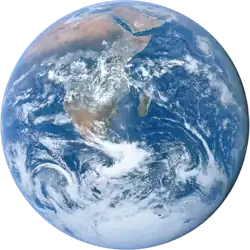
-

-

-

-

-

-
 Random portal
Random portal -
 WikiProject Portals
WikiProject Portals
Shortcuts to this page: Portal:West Indies • P:CARIB

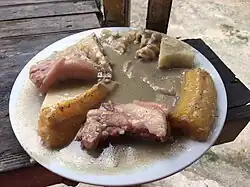
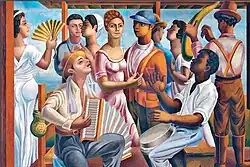
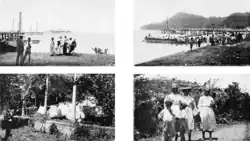
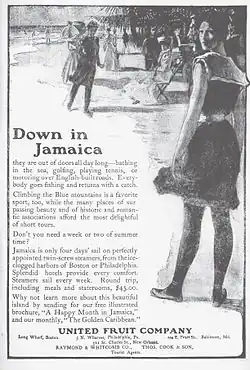
.jpg)
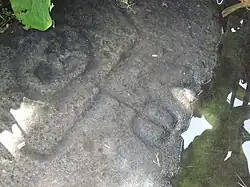

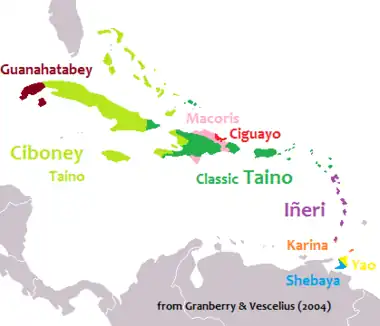

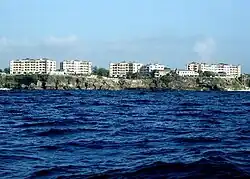



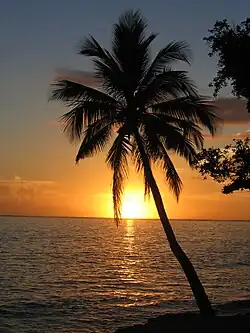




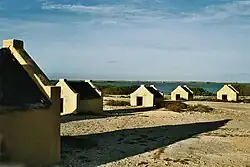
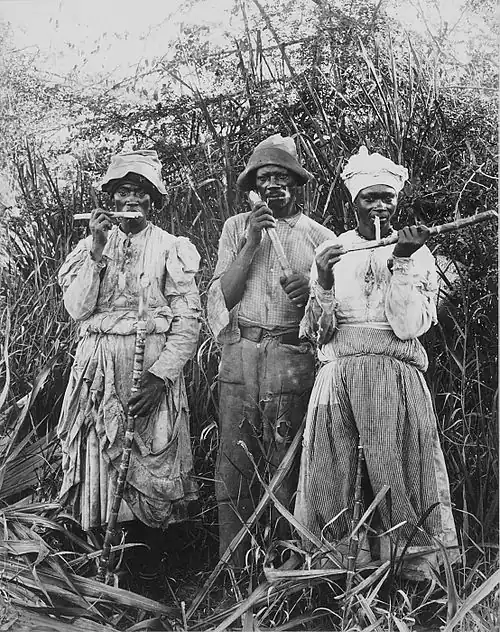


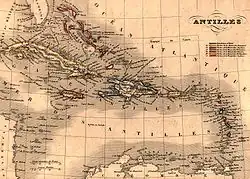
%252C_plate_IV_-_BL.jpg)








